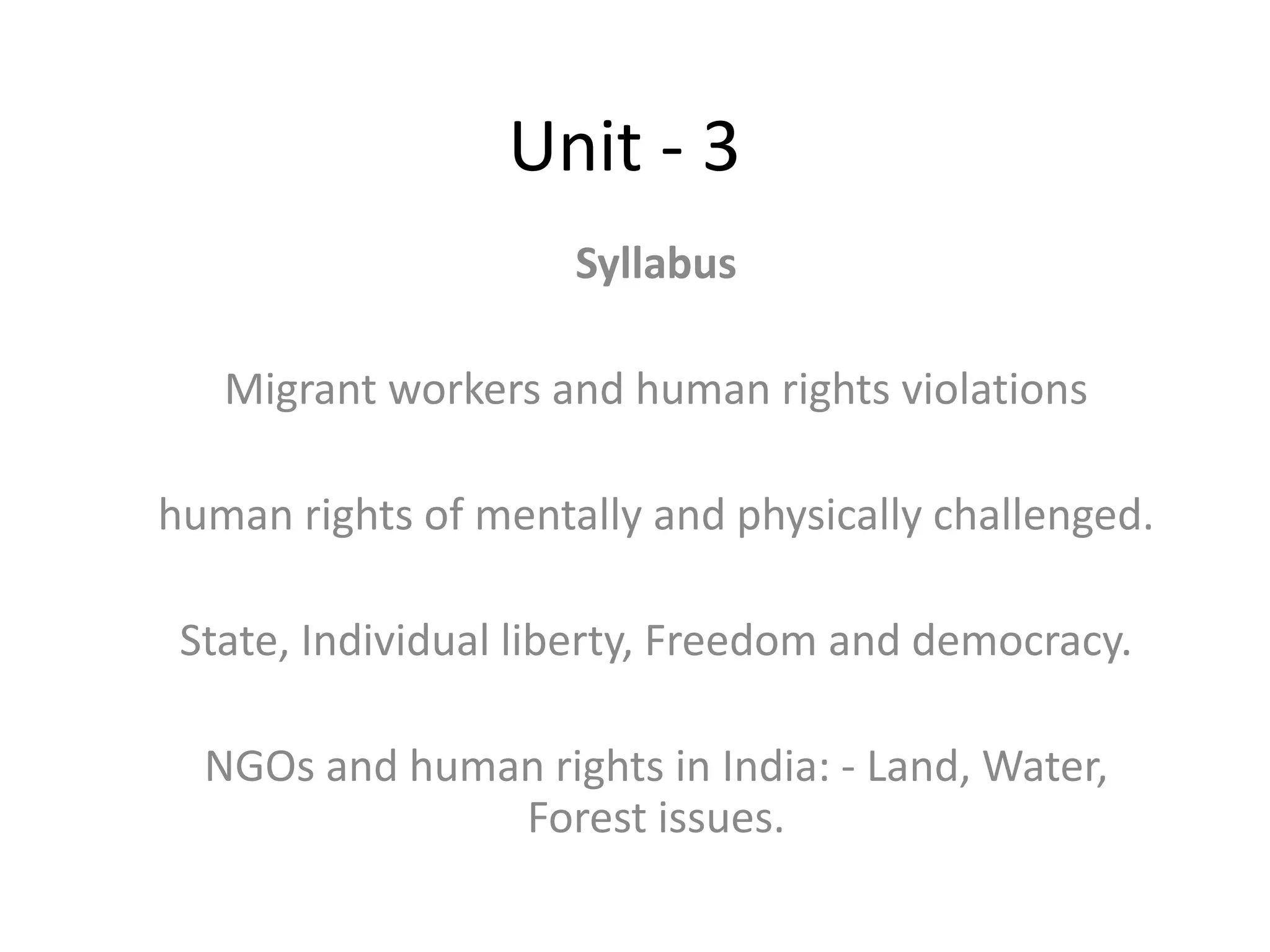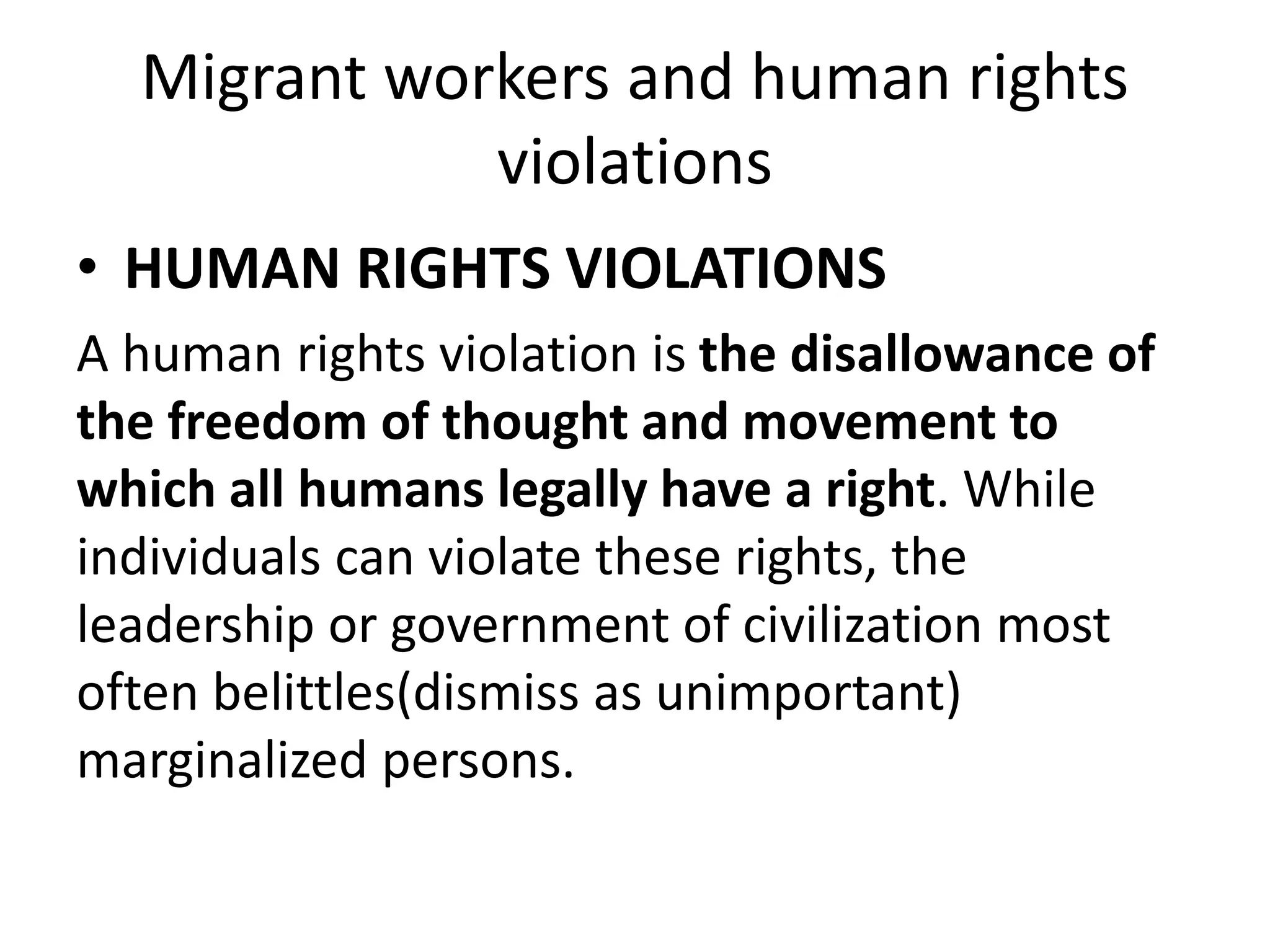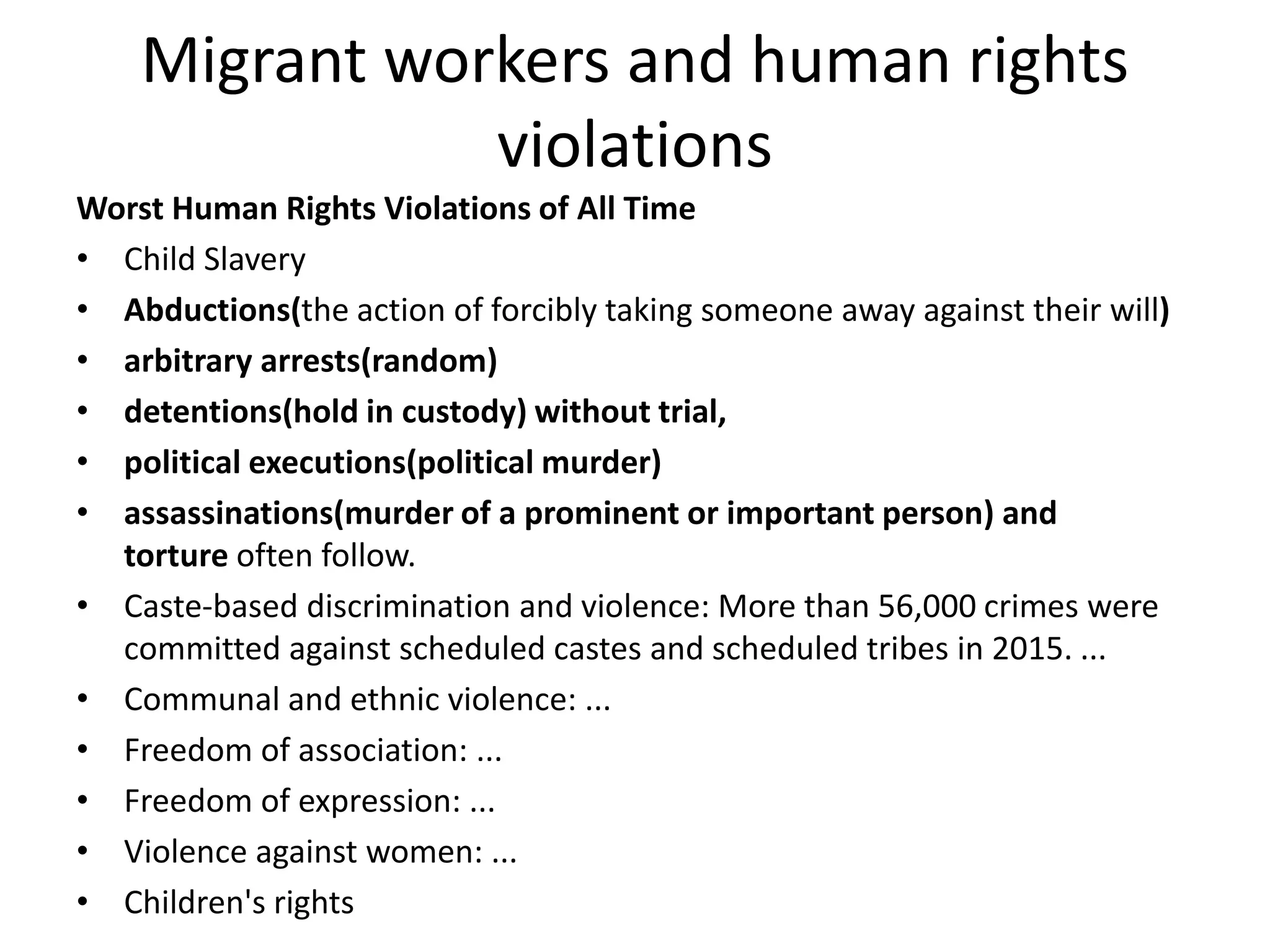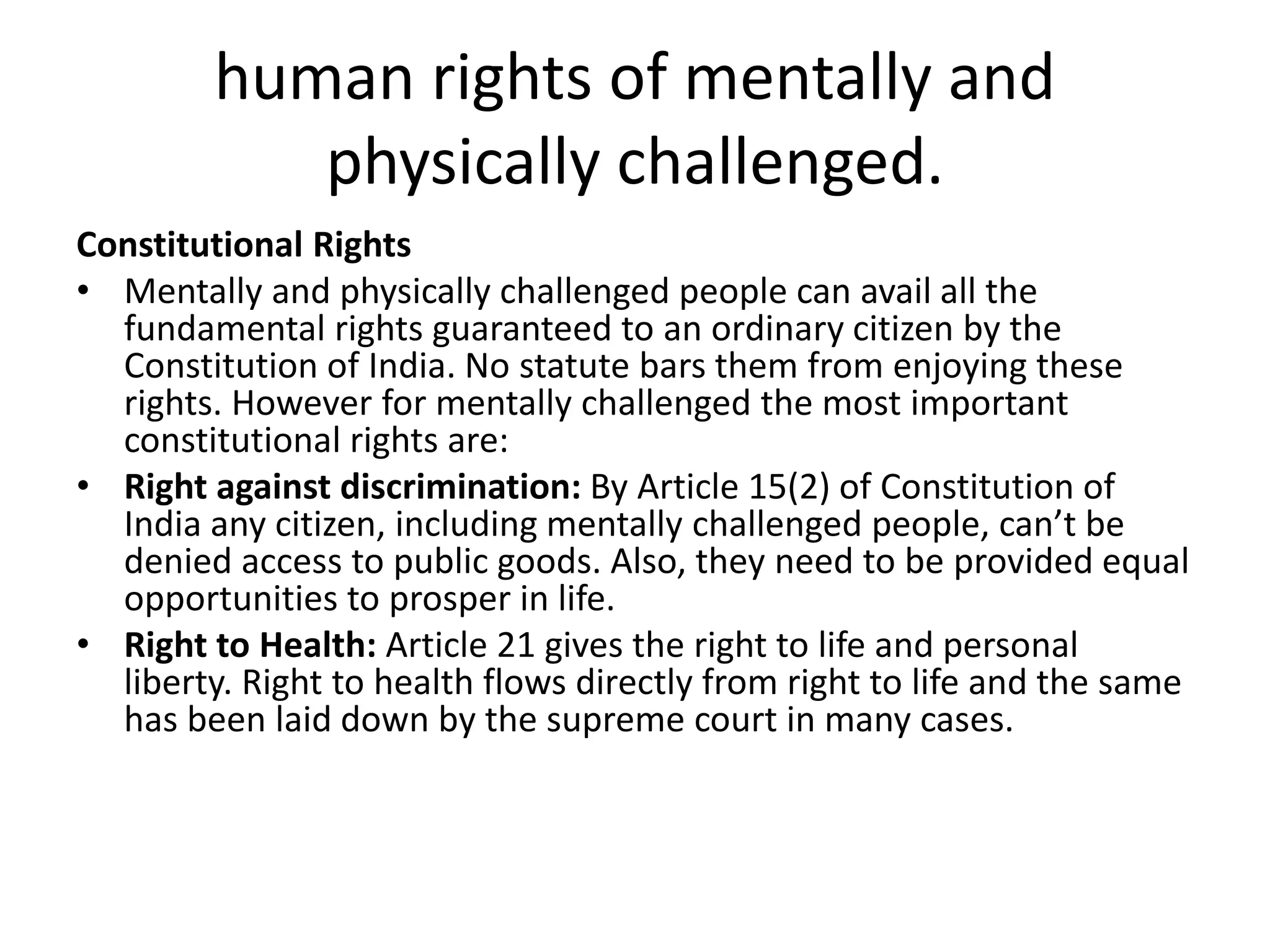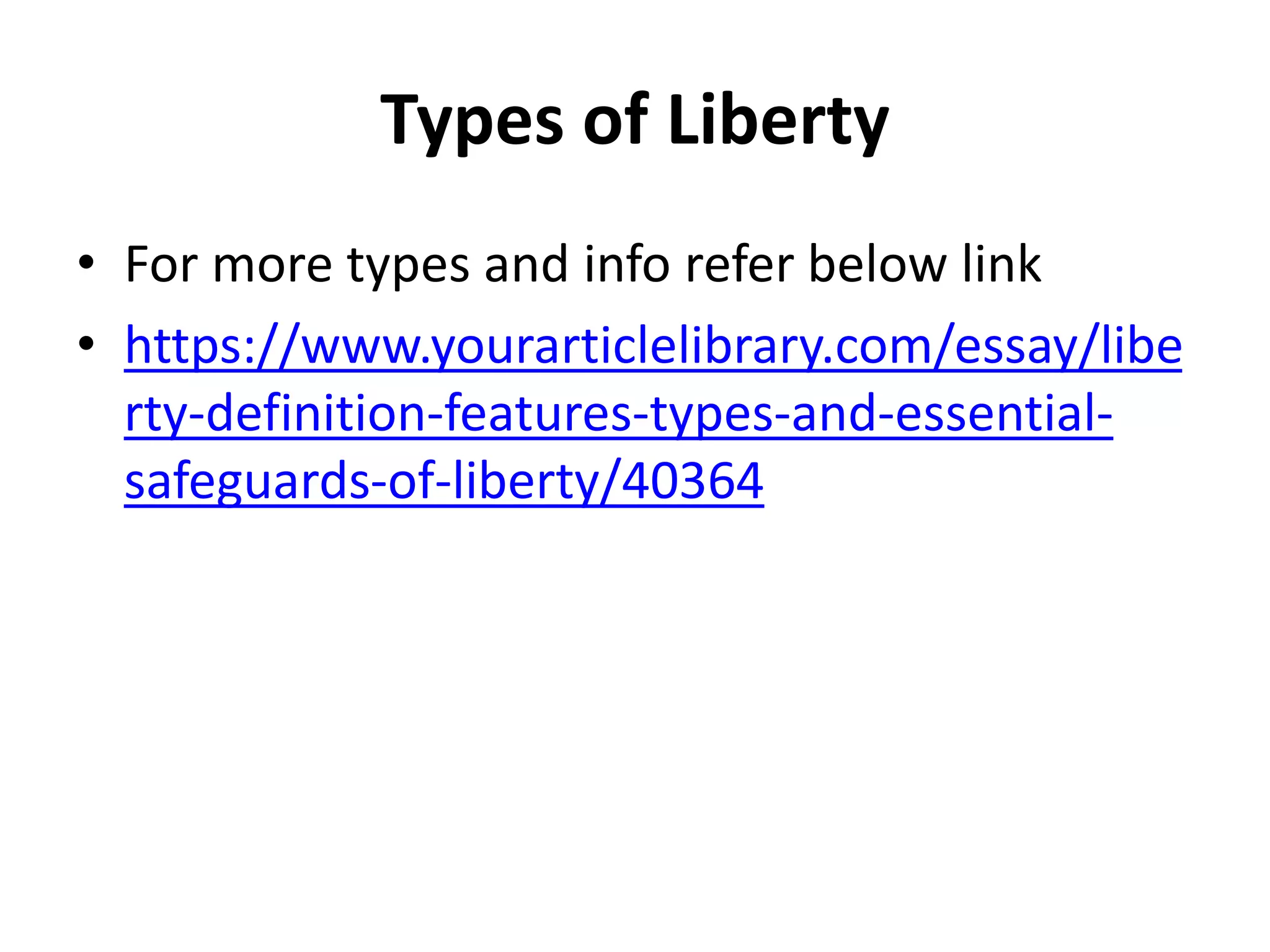The document discusses human rights issues related to migrant workers and people with disabilities in India. It outlines various human rights violations faced by these groups such as arbitrary arrests, child slavery, and lack of access to healthcare. Migrant workers experience low pay, unsafe working conditions, and discrimination. People with disabilities battle stigma, lack of accommodations, and limited educational and employment opportunities. The Rights of Persons with Disabilities Act of 2016 aims to promote their rights and inclusion.
